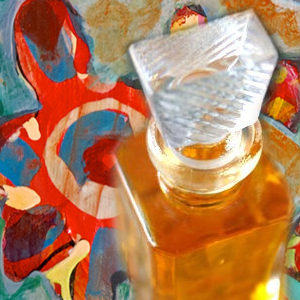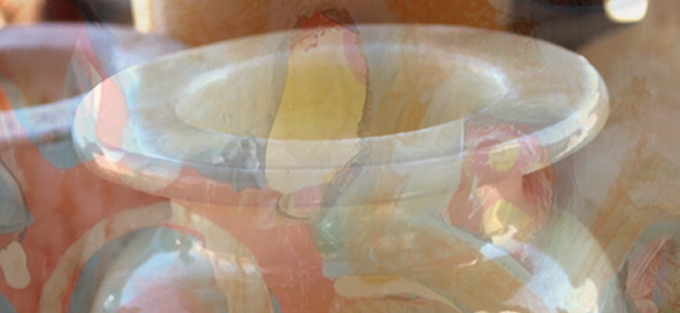by Angela T. Khabeb
Very few women are mentioned in all four gospels. Well-known exceptions are Mary, the mother of Jesus, and the women who arrive at Jesus’ empty tomb. Another is the enduring story of the woman with the alabaster jar. Each gospel writer records her courageous actions from a different perspective (Matthew 26:6-13; Mark 14:3-9; Luke 7:36-50; John 12:1-11).
Although the accounts differ, the biblical references have common threads. For example, there was a woman who owned an alabaster jar of costly perfume. She entered the home where Jesus was seated for a meal. She used the costly spikenard, or essential oil, to anoint Jesus. Her action outraged the disciples who were present.
Arguably, the men had good reason to be angry. The woman was out of her place—the meal was only for men. It was also socially inappropriate for her to touch Jesus–not to mention her waste of the expensive perfume.
In Luke and John, the woman uncovers her hair, which was scandalous. Nevertheless, Jesus immediately comes to her defense, “Let her alone. Why do you trouble her? She performed a good service for me.” Jesus continues to praise her actions and declares that wherever the Good News is proclaimed in the whole world that this story will serve as a tribute to her (Matthew 6:13; Mark 14:9).
Matthew and Mark offer nearly identical accounts of this nameless woman who anoints Jesus’ head with lavish abandonment. The gospel of John offers a similar account but attributes the action to Mary, Lazarus’ sister. However, Luke’s gospel is the one that is most different. In Luke’s gospel, Jesus uses the event as a teaching moment, offering a parable. Whatever the differences in the gospels, there is a woman who defies public expectations and takes great risk to approach Jesus. She knows that when she walks into the house that she will be surrounded by harsh critics. Yet she acts boldly and with purpose.
Her bold courage
 Her courage is especially evident when viewed through the lens of Luke’s gospel. The writer of Luke refers to her as a sinful woman. This sinful woman walks into the home of Simon the Pharisee. She was keenly aware that her gender alone made her an intruder. Her gender combined with her well-known sins made her a pariah. Risking social suicide, she brings a luxurious gift and anoints Jesus as the one who forgives sins, illuminating him as divine—equal to God—a bold and dangerous assertion. Jesus, understanding her keen spiritual insight, proclaims, “Your sins are forgiven…Your faith has saved you; go in peace.” Outraged, the dinner guests demand, “Who is this who even forgives sins” (Luke 7:48-50)? But like this woman, we are all sinful. In Luke’s gospel, the woman may very well represent humanity as we are all in need of forgiveness.
Her courage is especially evident when viewed through the lens of Luke’s gospel. The writer of Luke refers to her as a sinful woman. This sinful woman walks into the home of Simon the Pharisee. She was keenly aware that her gender alone made her an intruder. Her gender combined with her well-known sins made her a pariah. Risking social suicide, she brings a luxurious gift and anoints Jesus as the one who forgives sins, illuminating him as divine—equal to God—a bold and dangerous assertion. Jesus, understanding her keen spiritual insight, proclaims, “Your sins are forgiven…Your faith has saved you; go in peace.” Outraged, the dinner guests demand, “Who is this who even forgives sins” (Luke 7:48-50)? But like this woman, we are all sinful. In Luke’s gospel, the woman may very well represent humanity as we are all in need of forgiveness.
In Matthew, Mark and John, Jesus teaches us that the woman’s actions were more than a good deed. The woman with the alabaster jar anointed him for his burial. Through her action, she anointed Jesus as the Messiah, thereby stepping into the role of prophet. In each story, this woman portrays remarkable insight that is beyond the comprehension of the disciples who have spent so much time with Jesus.
What can we infer about this woman from the biblical narratives? In addition to being bold and unapologetic, she may have enjoyed some form of economic independence. The worth of the perfume was estimated as the equivalent of an average annual salary. Perhaps she was connected to the wealthy women benefactors who were dedicated to financially supporting Jesus’ ministry (Luke 8:1-3). Maybe Jesus knew who she was. It is also possible that she had some sort of religious understanding or spiritual insight. What we do know is that, regardless the cost, her faith propelled her to risk annoying the crowd so she could anoint the Christ.
It is no wonder that each of the gospel writers includes some version of this powerful narrative. The woman with the alabaster jar is immortalized in Scripture because she is the embodiment of abundant living. In John’s gospel, Jesus tells us, “I come so you may have life and have it more abundantly” (John 10:10).
This woman apparently needed nothing from Jesus. She went to Jesus to give. She knew that her actions would be deplored and yet she appears to be unhindered by the possibility of public ridicule or worse. She does not apologize for her presence. She offers no remorse for transgressing societal norms. Through her example, we encounter inspirational determination. At first glance, her story may seem unassuming, but it is rather complicated.
Just beneath the surface of her seemingly simple story lies a treasure of strength. This multi-layered narrative speaks to the sacrifice that, at times, accompanies discipleship. Remarkably, she is only one of many bold women in Scripture. Fortunately for us, most biblical women did not get the memo to live apologetically. Thankfully, we can embrace their hope-filled stories and allow their rich biblical heritage to connect with our faith journeys as we live into Christ’s promise of abundant life.
Discussion questions:
1. What does Jesus’ actions toward the woman in these narratives suggest about his relationship with women?
2. Can you think of other unapologetic women who are recorded in Scripture? (Some examples—Pilate’s wife, Matthew 27:19; the hemorrhaging woman, Mark 5:25-34; and the woman who needed healing for her child, Mark 7:24-30).
3. Where is God calling you to be bold and unapologetic?
Closing prayer
Dear God,
Thank you for showering us with abundant examples of bold women who live unapologetic lives. Encourage us to take risks of faith, trusting in your promise of abundant life. Teach us to live into our baptismal calling—to strive for justice and peace in all the earth. We boldly pray in the name of Jesus. Amen.
The Rev. Angela T. Khabeb is the associate pastor at Ascension Lutheran Church in Waukesha, Wis. She has an amazing husband, Benhi, two spectacular sons, Konami and Khenna, and a precious baby girl, Khonni.
Photos by torbakhopper, sj liew and Tara Aveilhe. Used with permission.

